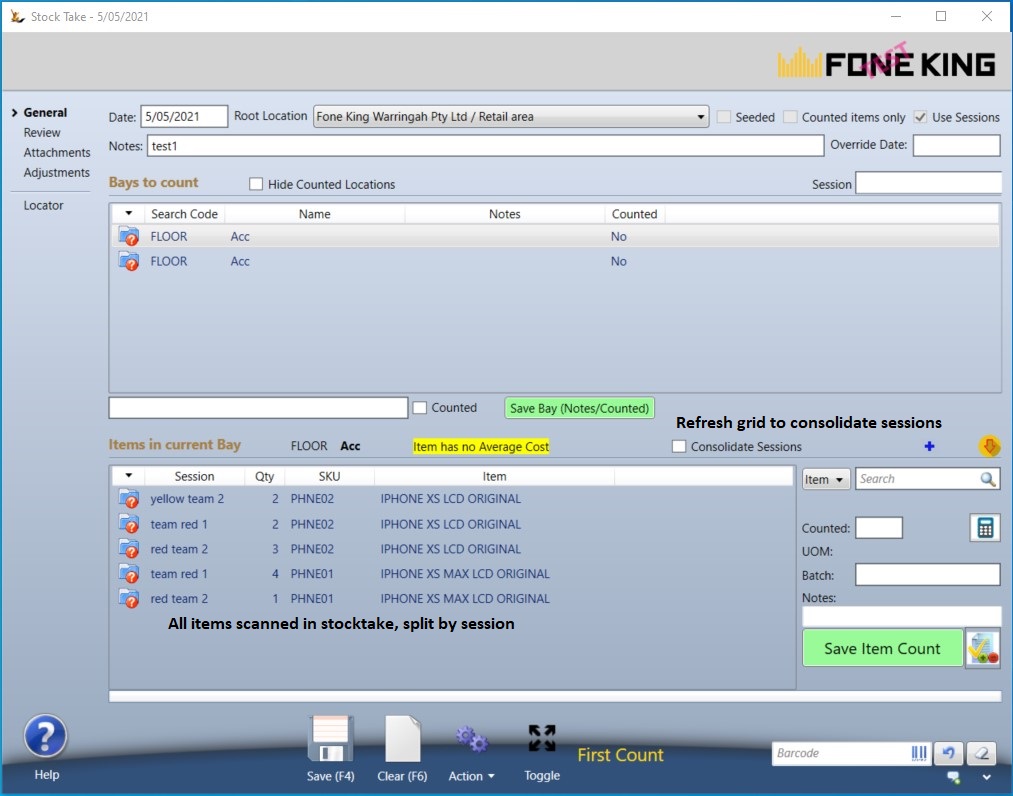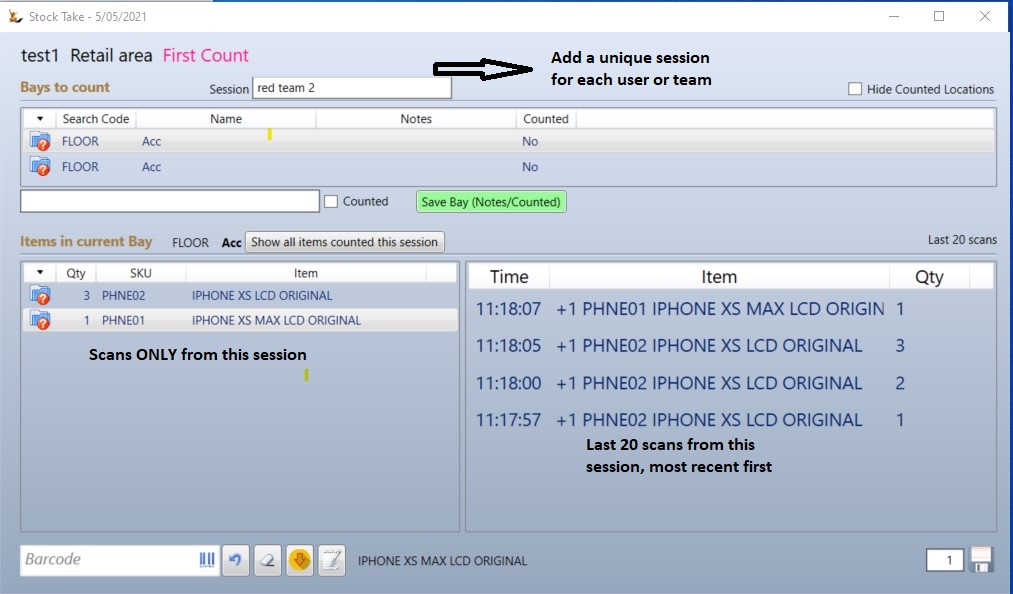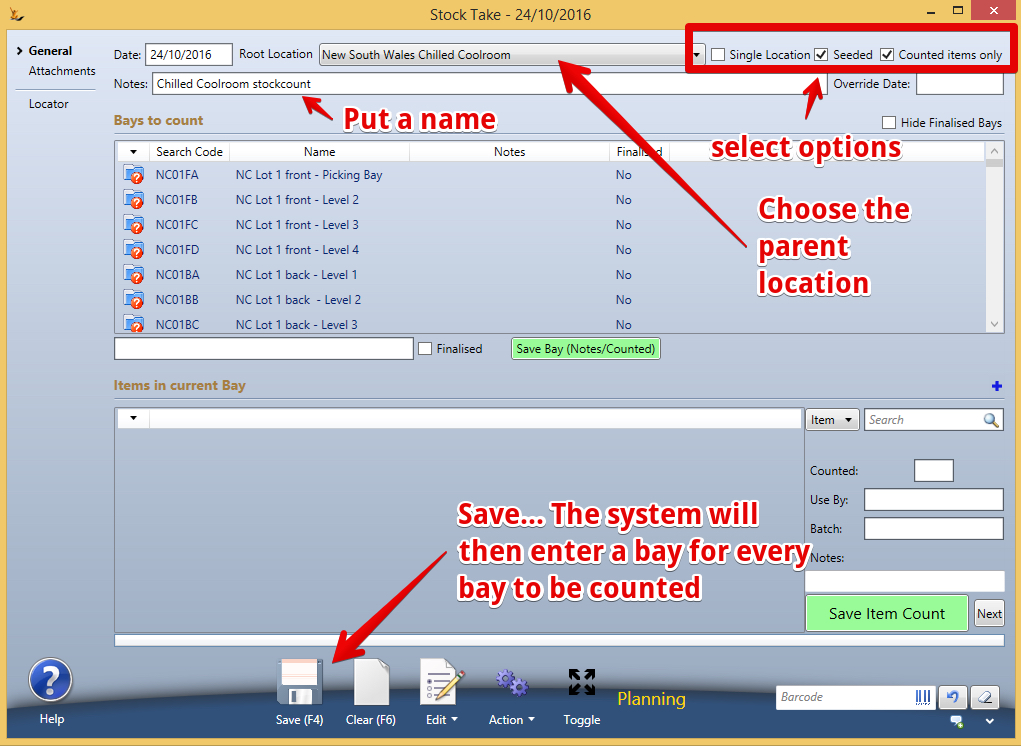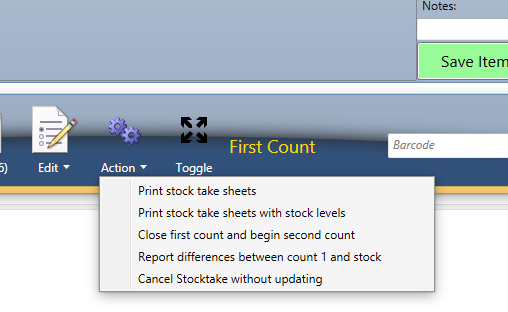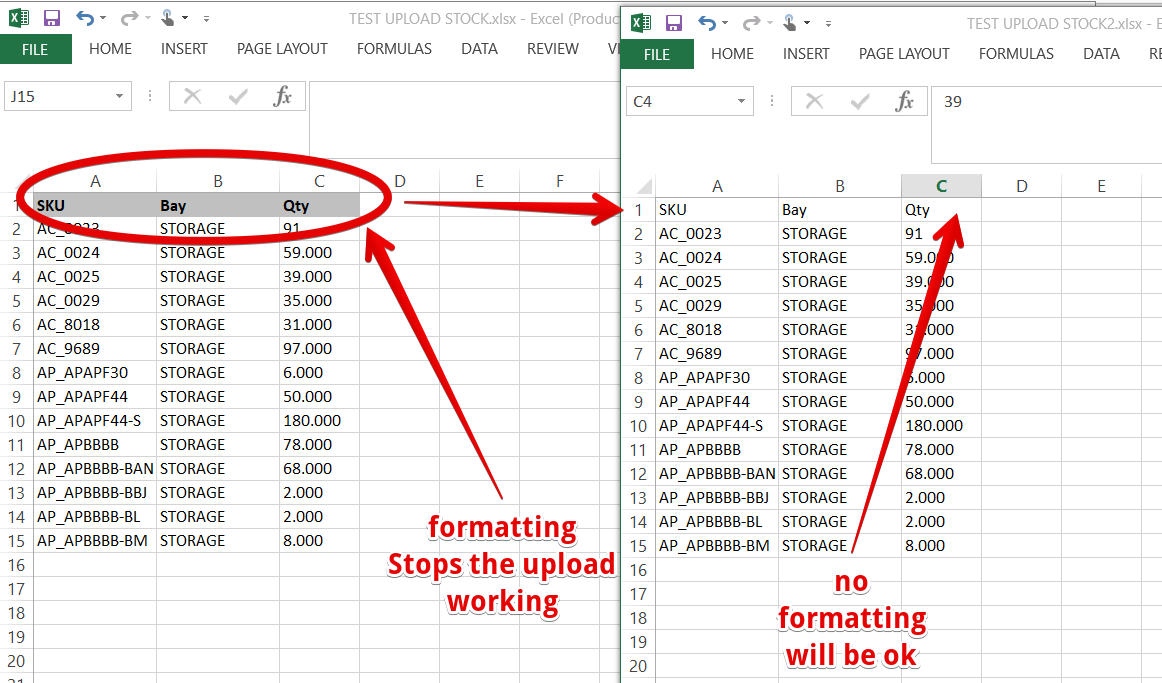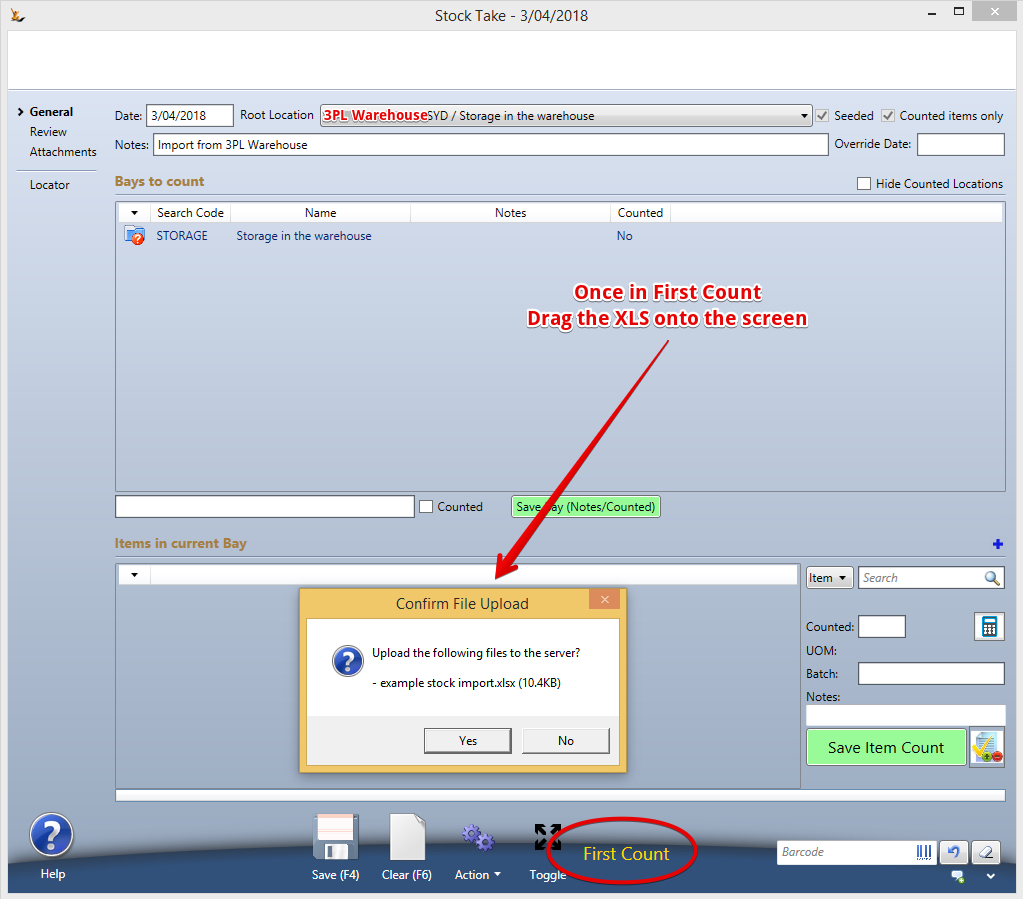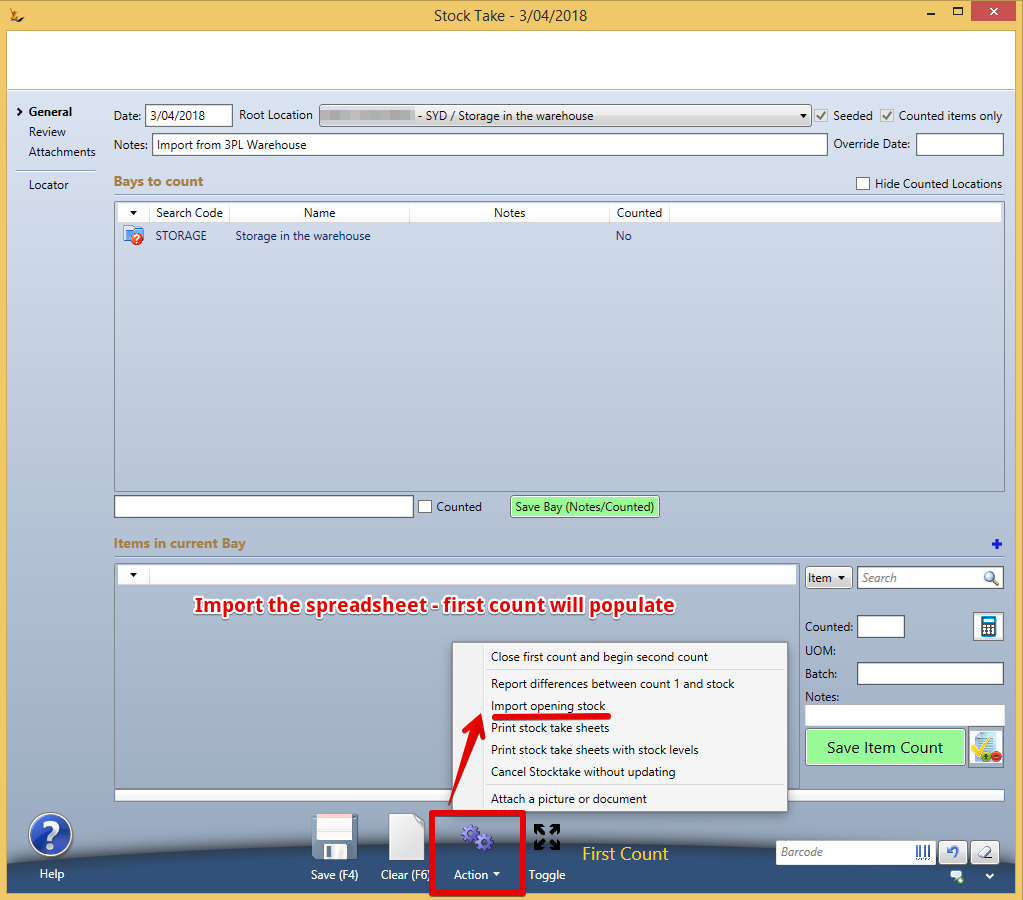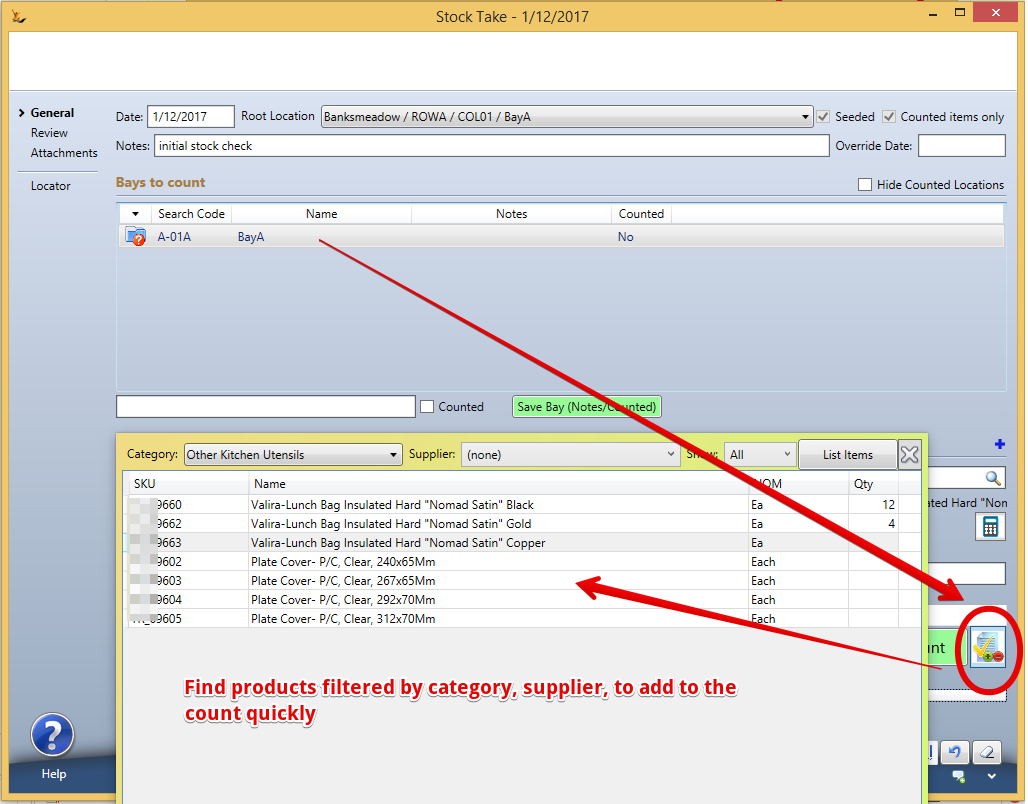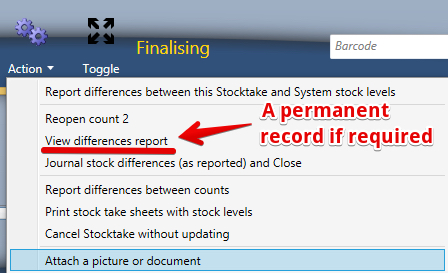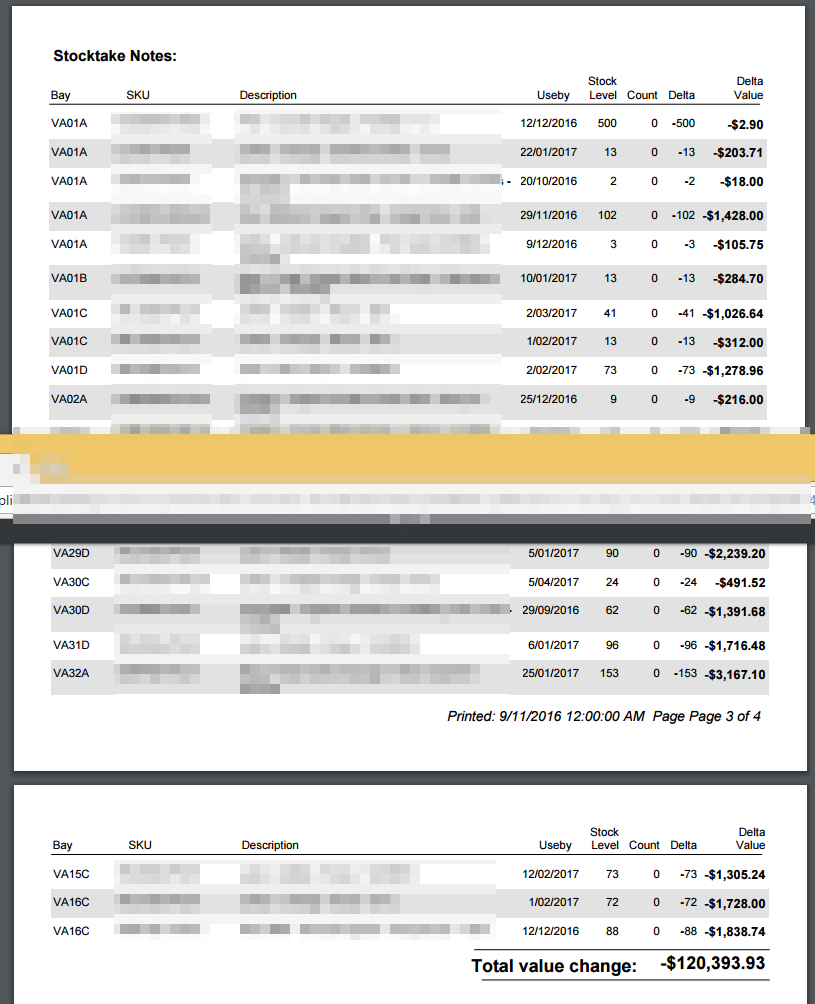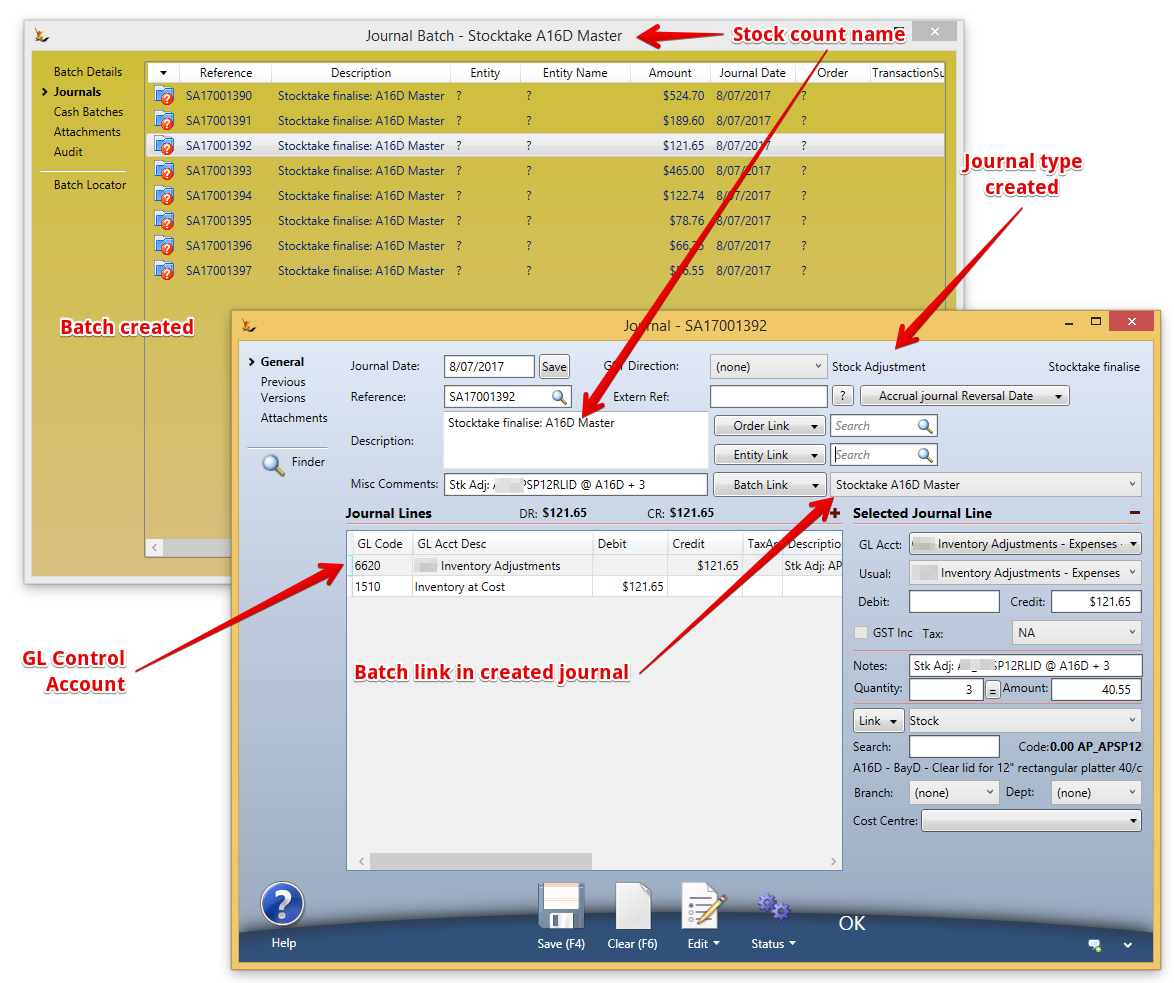Use Sidebar LHS to navigate
For global help click here
Stock Take
Table of Contents
Overview
Regular stock takes ensure the inventory levels in your account are accurate.
Warehouses and Stock Locations that hold stock are "Lot / Pallet Bay"
if a stock location has multiple stock items in it and that stock bay is counted - only the counted items are updated UNLESS counted items only is ticked. So if you want the stocktake to remove items that are not there either
- Count them at ZERO when counted items only is ticked
- or Do not tick counted items only (all non counted items will be removed)
Options:
- Seeded
- Selected = will seed the stockcount with items/Expiry dates you expect to find but no counts
- Not Selected = no items seeded - must manually enter all items.
- Counted items only
- Not selected
- all items must be counted
- any not counted will be removed from stock
- Selected
- only the items with a count in count 2 will be updated
- Uncounted stock items will not have their count updated
- Not selected
Shortcuts
Can Copy Count 1 to Count 2 and then finalise from Count 2. This effectively means you only do a single count
Can print out the current stock levels of all stock the system thinks is in the counting locations to compare with counting sheets
When using Seeded Stocktake - the counting sheets are the same layout as the current stock level sheet - so it is easy to look for discrepancies between the system levels and the counted levels.
When using counted items only - you can enter only the stock items you find a discrepancy.
- So count some or all items using paper
- compare to the stock levels using paper stock levels printout
- mark on your counting sheets only those that are different
- check count them
- Enter only those item counts into the system (much less data entry)
- Finalise the stocktake
You can import an excel sheet with columns Bay, SKU, Qty.
Drag the spreadsheet over the screen - upload - choose "Use as initial stock" - it will populate the stock count.
Retail Stocktake
The retail stocktake screen uses scanners to count stock and is very fast for a retail setting where multiple persons count the stock in a single stocktake.
The stocktake is defined and count started using the normal stocktake screens (Below) - the stocktake is done using the retail stocktake screens.
Below image is screen Stock>Stock Take
Addition of Sessions. Sessions can be used if you want each logged in user to see only the items they scan and not other users. This can be useful if there are SKUs in multiple areas throughout the stocktake
Below image is screen POS Point Of Sale > Stock Management > Store Stock Take
There is no provision for capturing expiry dates unless the barcode includes the expiry dates of the product.
Process
- First Count
- Second Count
- Finalising
- Create Journals ( second count vs current system stock levels )
You will need Secure Features#IsStockManager to perform stocktakes
Initial Stock
when setting up a new company and you do not want to write stock adjustment journals
When setting up a new company that has existing stock - you can count the stock and not write journals - instead using a single journal line for the stock value.
This feature can also be used to count stock that you do not need to do journals for adjustments - for example stock held on consignment
At end of count 2 "Use this stock as initial stock" - requires
- Employee to be flagged as Admin
- Root location to be a Warehouse
- Not Seeded, Not counted items only
Before you start
Floor Areas are not for storing stock
Stock is not normally stored in a floor area - a floor area is where stock is checked before being stored, or assembled to go out on an order.
If any selected level to do a stock count has stock in a floor area then the stocktake cannot be started until any stock in an included floor location has been put away.
The move order form will open.
Seeded stocktake (system provides a list of what you should find in the location)
The system provides a list of the products that you should find in each location including batch numbers and expiry dates - but not stock counts.
Seeded stocktakes are faster - however users tend to look for what they see on the screen rather than check all the stock in a location.
Seeded stocktake is recommended for quick stock checks.
Seeded Stocktake combined with Counted Items only allows only the items counted to be included - so it is easy to count only a brand or location.
Creating a stock count
Action - Start First Count
Once first count is started there are a number of print options. A manager is likely to want to print stocktake sheets with stock levels to compare with actuals.
If doing a Retail Stocktake - use the retail stocktake screen for counting via barcode RetailStocktake
Barcode scanners can also be used with the normal counting screens (at the same time) if you need to also select from known expiry dates as you count.
Any Stocktake (including 3PL check counts) - upload of XLS
If you use a 3PL warehouse who send you XLS current counts on a regular basis - you can create a stock count by uploading the xls file to compare with system stock levels.
The import simply updates the count information instead of manual entry - follow the rest of the process as described below.
Column headers in the spreadsheet = SKU, Qty, Bay
Ensure there is no formatting in your spreadsheet to upload
Drag the XLS onto the screen once in first count
Then import the stock count
Counting sheet printouts
Seeded Stocktake - printout has bays, stock article expected - but no count
Not Seeded Stocktake - printout has bays only
Counting
Enter stock articles, counts, expiry dates and save.
- If you enter the wrong expiry date you will be prompted for the correct one. ie if you enter a different expiry date to one that exists in that stock location.
- The dropdown list shows all possible expiry dates for the stock based on PO receipts for 1.5 x max days expiry for the stock article
Delete any count using rightclick in the grid
Multiple users can be entering counts at the same time.
Can compare stock with count anytime
Can mass count items not expected
Barcodes for locations and stock articles can be used to rapidly enter the information - see Setting up Barcode Scanners
Close first count and start second count
When ready move to second count - a different group may count.
Can update the notes on the overall stocktake or at the bay levell with who counted where
Can copy first count to second count (if you do not plan to do a check count)
Compare 1st count and second count
Anytime while second count is not complete - do a comparison to check any items that require to be check counted
Finalise
You MUST compare count with stock levels to proceed
Can re-open Count 2 and update if want to.
Differences Report - a permanent PDF record of the differences
After compare count with stock levels - a new option appears: The differences report - a PDF report that can be printed and filed - or attached to the stock count as a permanent record of the differences.
The differences report is only available after compare with stock and before journal stock differences
Finder
Finding locations that need a second count during the stocktake (if each location has a separate count)
Perishable Items Special Note
Perishable items - when stocktake finds new stock
When counting perishable items - a useby date is captured. If the product is a purchased product then for traceability and recall reasons - the expiry date must be one that was received on a Purchase order recently enough not to have expired.
The system looks to find any purchase orders that were received into the system and the expiry dates of the items received. The current warehouse is checked first - if not found all warehouses are checked.
The system will link the stock to the most recently receipted with that useby.
If the system cannot find the useby on any stock receipt - it will not allow the stock to be created by the stocktake.
You will see the stock with errors in the comparison with stock list
Journal Stock Differences
Will create the required journals for the stock adjustments - the Journal will include the notes from the stocktake screen.
Will place the Journals into a Journal Batch (so they are grouped together) and will close the batch.
Stock take adjustment GL account is configured in Symbols Config as "Stock TakeAdjustmentGLCode"
User will require the Secure Feature "Can Record Stock Adjustment"
Status will become closed.
A stocktake can be cancelled at any time, unless it has a status of Cancelled or Closed, by choosing 'Cancel Stocktake without updating' from the Status/Action menu.
For information about SaaSplications go to http://saasplications.com.au

